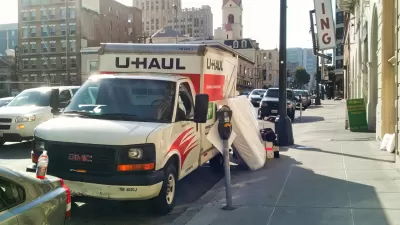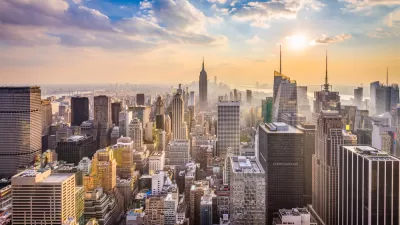The influx of new households to rural communities is driving up housing costs for existing residents and straining local infrastructure, sparking difficult conversations about future growth.

The rapid growth of rural areas sparked by the Covid-19 pandemic, the rise of remote work, and increasingly unaffordable urban housing costs is a continuing source of frustration for rural residents who see their cost of living rising and their small communities changing. Nazmul Ahasan and Gregory Korte describe the crisis in Bloomberg CityLab.
As the authors explain, “The rural population expanded 0.3%, or 241,300 people, in the two years through mid-2022, according to Bloomberg calculations using Census data and a US Department of Agriculture methodology.” In 2021, the population in non-metro areas outgrew urban populations for the first time in three decades.
“The trend is sparking resentment as house prices in the top 10 rural counties that have seen the biggest population increases surged more than 40% over the past three years. Schools are overloaded and the shift is even impacting farmland prices.” In some of the most extreme cases like Jackson County, Georgia, home prices rose by 50 percent in the first half of 2023 compared to 2020.
The growth brings mixed feelings as “the arrival of new residents presents a dilemma for local officials, who prize the economic benefits they bring but also have to contend with poor infrastructure to sustain the growth. Locals complain about poor traffic infrastructure, noise, overloaded schools and even homelessness.”
FULL STORY: Pandemic Population Boom in Rural Hotspots Sparks Resentment

Study: Maui’s Plan to Convert Vacation Rentals to Long-Term Housing Could Cause Nearly $1 Billion Economic Loss
The plan would reduce visitor accommodation by 25,% resulting in 1,900 jobs lost.

North Texas Transit Leaders Tout Benefits of TOD for Growing Region
At a summit focused on transit-oriented development, policymakers discussed how North Texas’ expanded light rail system can serve as a tool for economic growth.

Using Old Oil and Gas Wells for Green Energy Storage
Penn State researchers have found that repurposing abandoned oil and gas wells for geothermal-assisted compressed-air energy storage can boost efficiency, reduce environmental risks, and support clean energy and job transitions.

Santa Barbara Could Build Housing on County Land
County supervisors moved forward a proposal to build workforce housing on two county-owned parcels.

San Mateo Formally Opposes Freeway Project
The city council will send a letter to Caltrans urging the agency to reconsider a plan to expand the 101 through the city of San Mateo.

A Bronx Community Fights to Have its Voice Heard
After organizing and giving input for decades, the community around the Kingsbridge Armory might actually see it redeveloped — and they want to continue to have a say in how it goes.
Urban Design for Planners 1: Software Tools
This six-course series explores essential urban design concepts using open source software and equips planners with the tools they need to participate fully in the urban design process.
Planning for Universal Design
Learn the tools for implementing Universal Design in planning regulations.
Ascent Environmental
Borough of Carlisle
Institute for Housing and Urban Development Studies (IHS)
City of Grandview
Harvard GSD Executive Education
Toledo-Lucas County Plan Commissions
Salt Lake City
NYU Wagner Graduate School of Public Service





























